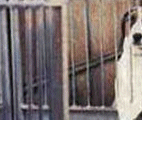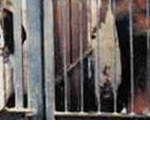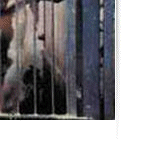Click here to go back.
BANTING AND BEST
The notion that diabetes was caused by a lack of insulin had already been shown. The next logical step was to attempt providing supplemental insulin to diabetic patients. Enter Frederick Banting and Charles Best. The notion of providing insulin was sound. But their methodology and the quality of their work was lacking—in fact dangerously so.
Banting and Best attempted to reproduce diabetes in dogs through surgical removal of the pancreas. They then attempted to treat this condition through injections of pancreatic extract from other dogs. In a critique of their work in the British Medical Journal, their contemporary Dr. Ffrangon Roberts stated, “Although diminution in the blood sugar of depancreatized dogs on administration of pancreatic extract had frequently been observed... no results of any value had been obtained by this method in the treatment of human diabetes. On the contrary, it has been said that the administration of such extracts to human beings is not unattended with danger."1
Another contemporary, Dr. P.J. Cammidge, commented on the dog experiments in the British Medical Journal, “'numerous attempts to apply this knowledge clinically to the treatment of diabetes have ultimately ended in failure.”2
The primary shortfall of their work was that simply removing the pancreas of otherwise healthy dogs did not produce diabetes. Diabetes is a very complex and long-term condition resulting from a variety of hereditary and environmental factors. Neither the onset of the disease nor its long-term effects on all body systems could be sufficiently reproduced by Banting and Best’s artificial means.3,4,5
According to Dr. F.G. Young, Professor of Biochemistry, University of London, “There is no laboratory method of inducing diabetes...which is exactly comparable to the clinical condition. At best we can get only crude approximations. The dangers of arguing from one species to another, or even from one strain to another of the same species are certainly not to be neglected.”6
Leonard Thompson is generally believed to have been the first human patient to receive insulin. Though his blood-sugar count had been reduced, he received no clinical benefit, and developed an abscess at the injection site. It was determined the Banting and Best’s preparation was, “'absolutely useless for continued administration to the human subject."7
Thomspon, however, would continue his injections using the preparation of another researcher, James Bertram Collip. Following these injections his health improved and, “'this was the first unambiguously successful clinical test of the internal secretion of the pancreas on a human diabetic."8
It would be Collip’s extract, developed through test-tube techniques, and not Frederick Banting and Charles Best’s dog-pancreas extract that would become the insulin used by diabetic patients around the world.
Fellow vivisector and diabetes researcher Dr. Moses Barron stated, “The scientists Banting and Best were incorrectly credited with the discovery of insulin.”9
1. Dr. Ffrangon Roberts, British Medical Journal (15 December 1922): 1193.
2. Dr P. J. Cammidge, British Medical Journal (18 November 1922): 997.
3. Johns Hopkins University Center for Alternatives To Animal Testing,
"NIH Plan for the Use of Animals in Research in Response to the 1993 NIH Revitalization Act," (1997).
4. Hugh MacLean, M.D., D.Sc., Lancet (26 May 1923): 1043.
5. Dr Harry Keen, BSc, M.R.C.P., "Spontaneous Diabetes in Man and Animals," Veterinary Record (9 July 1960): 557.
6. Dr F.G. Young, Professor of Biochemistry, University of London, Lancet (18 December 1948): 955-956.
7. Michael Bliss, The Discovery of Insulin (Chicago: University of Chicago Press, 1982), 113.
8. Bliss, 120-121.
9. Dr. Moses Barron, "The relation of the islets of Langerhans to diabetes with special reference to cases of pancreatic lithiasis," Surgery, Gynecology and Obstetrics Vol.31 (November 1920): 444.







